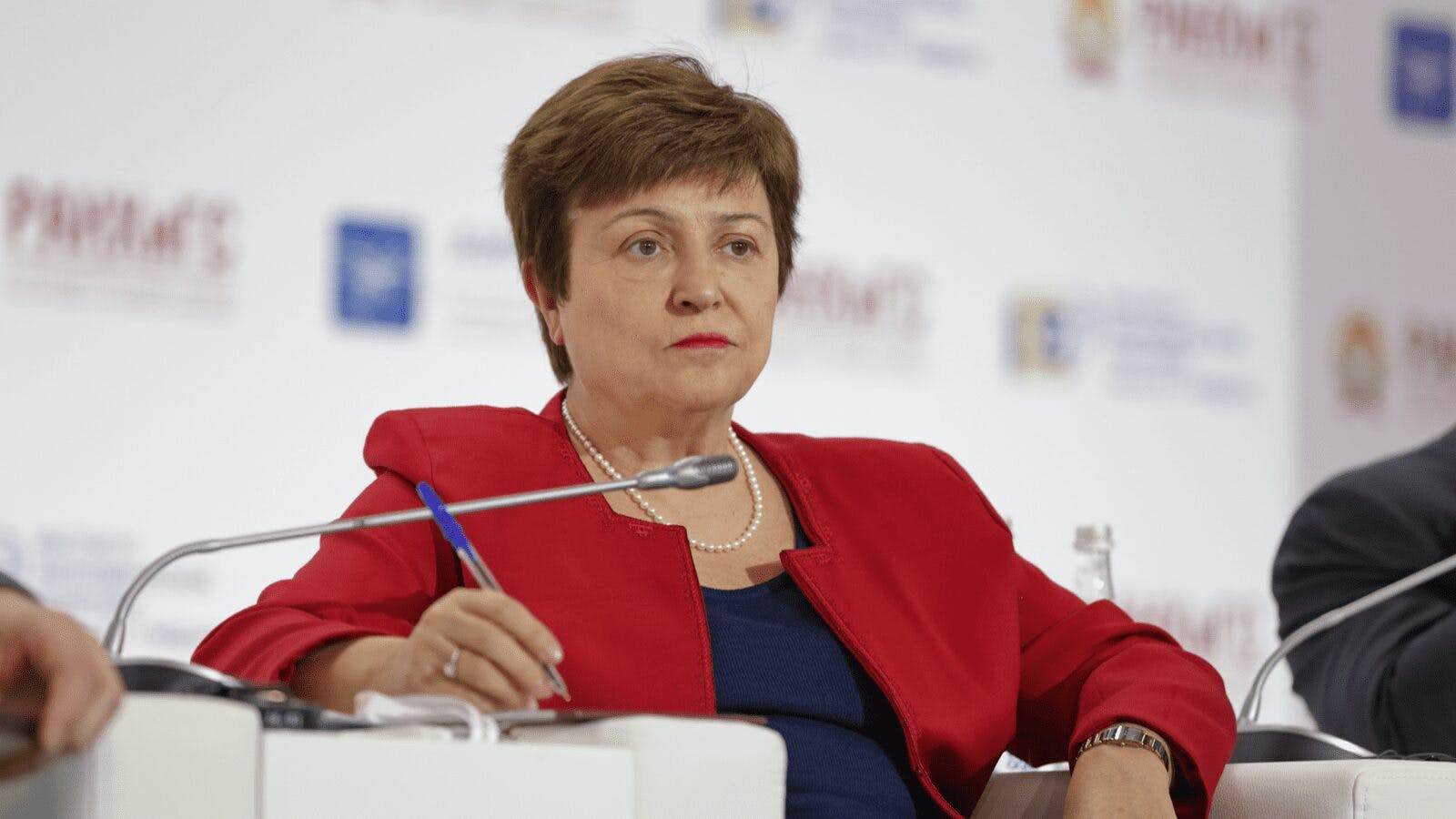Consider the Environment When Designing CBDCs, IMF Urges
Central banks should steer clear of proof-of-work protocols, the international institution says

Kristalina Georgieva, managing director of the International Monetary Fund | Source: Shutterstock
- IMF report suggests countries, crypto infrastructure providers move away from proof-of-work-based CBDCs
- CBDCs should be better for the environment than existing systems, analysts said
A new study from the International Monetary Fund urges countries looking to develop CBDCs to consider energy consumption when making their design choices.
Central banks should “design CBDCs [central bank digital currencies] with the explicit goal to be environmentally friendly,” the IMF said in the report. The payments system broadly, including central banks’ legacy systems, uses a large amount of energy, and moving toward renewables across the entire financial sector should be the goal, IMF analysts added.
“What we are seeing now is a broader realization that if CBDC is going to be an infrastructure, it has to be better than the one we have,” Carmelle Cadet, CEO of CBDC infrastructure provider EMTECH, said. “In addition to processing payments faster, with easier traceability and trust, CBDC has to be energy efficient.”
“Major cloud service providers are shifting toward renewable sources of energy such as geothermal and hydropower, as well as toward locations with colder climates, to reduce the carbon footprint in generating power,” the report read. “Adding the environmental footprint as a selection criterion of a cloud partner can benefit not only the CBDC project, but also any future digitization project of a central bank.”
The IMF also recommends that countries and crypto companies move away from energy-intensive proof-of-work protocols, a suggestion some say could impact user experience.
“Different protocols focus on various priorities…you have trade-offs that might not align to energy efficiency,” Cadet said.
The report comes as more nations, particularly developing countries, make strides toward launching their own CBDCs, which advocates say can drastically improve the lives of those living in predominantly cash-driven societies.
“Providing a cash-like digital means of payment, in light of reduced cash usage and an increase in private digital payment services, is the most common consideration [for developing a CBDC],” a recent report from the Bank for International Settlements said. “Other significant considerations include strengthening competition among payment service providers (PSPs), increasing efficiency and reducing the costs of financial services.”
Jamaica has already approved its upcoming CBDC as legal tender in the nation. Brazil, Nigeria and Haiti are among the jurisdictions exploring the establishment or expansion of CBDCs. The Central Bank of the Bahamas’ Sand Dollar became the world’s first CBDC in 2020.
With environmental, social and governance-focused investing and climate change at the front of many minds, it is not a surprise that the IMF is choosing to focus on how digital assets impact the environment, according to another CBDC expert.
“Central banks are thinking about energy, and they should be thinking about energy,” said Jonathan Dharmapalan, CEO of eCurrency, which provides technology for central banks to issue and distribute CBDCs. “Energy efficiency is not just about how to do this with digital currency, it is also about the lack of energy efficiency and moving physical currency, which is also an issue.”
Correction: An earlier version of this story featured an image of Christine Lagarde, who was the Managing Director of the IMF until 2019 when she became the President of the European Central Bank.
Get the news in your inbox. Explore Blockworks newsletters:
- The Breakdown: Decoding crypto and the markets. Daily.
- 0xResearch: Alpha in your inbox. Think like an analyst.






